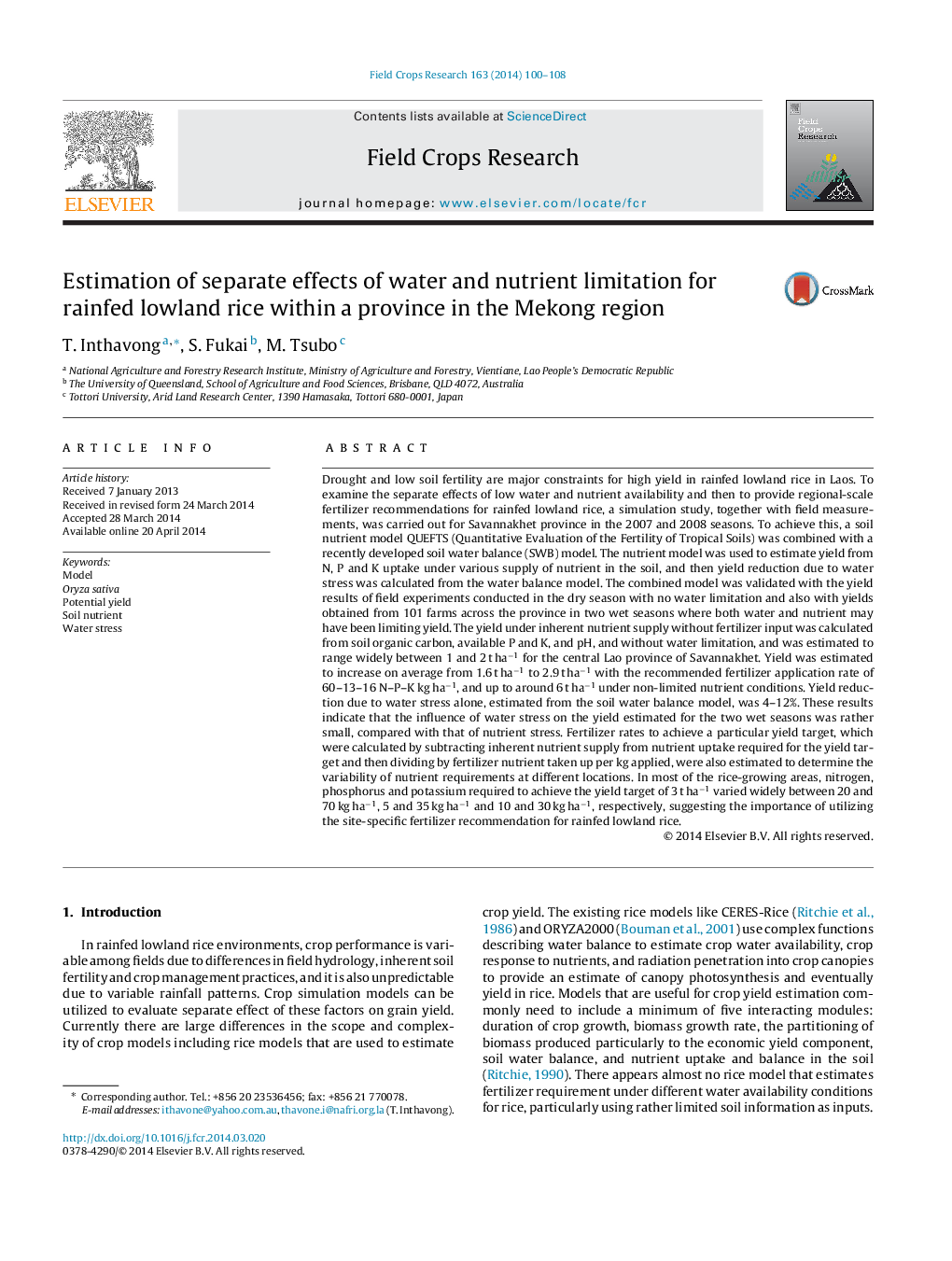| Article ID | Journal | Published Year | Pages | File Type |
|---|---|---|---|---|
| 4510116 | Field Crops Research | 2014 | 9 Pages |
Abstract
Drought and low soil fertility are major constraints for high yield in rainfed lowland rice in Laos. To examine the separate effects of low water and nutrient availability and then to provide regional-scale fertilizer recommendations for rainfed lowland rice, a simulation study, together with field measurements, was carried out for Savannakhet province in the 2007 and 2008 seasons. To achieve this, a soil nutrient model QUEFTS (Quantitative Evaluation of the Fertility of Tropical Soils) was combined with a recently developed soil water balance (SWB) model. The nutrient model was used to estimate yield from N, P and K uptake under various supply of nutrient in the soil, and then yield reduction due to water stress was calculated from the water balance model. The combined model was validated with the yield results of field experiments conducted in the dry season with no water limitation and also with yields obtained from 101 farms across the province in two wet seasons where both water and nutrient may have been limiting yield. The yield under inherent nutrient supply without fertilizer input was calculated from soil organic carbon, available P and K, and pH, and without water limitation, and was estimated to range widely between 1 and 2 t haâ1 for the central Lao province of Savannakhet. Yield was estimated to increase on average from 1.6 t haâ1 to 2.9 t haâ1 with the recommended fertilizer application rate of 60-13-16 N-P-K kg haâ1, and up to around 6 t haâ1 under non-limited nutrient conditions. Yield reduction due to water stress alone, estimated from the soil water balance model, was 4-12%. These results indicate that the influence of water stress on the yield estimated for the two wet seasons was rather small, compared with that of nutrient stress. Fertilizer rates to achieve a particular yield target, which were calculated by subtracting inherent nutrient supply from nutrient uptake required for the yield target and then dividing by fertilizer nutrient taken up per kg applied, were also estimated to determine the variability of nutrient requirements at different locations. In most of the rice-growing areas, nitrogen, phosphorus and potassium required to achieve the yield target of 3 t haâ1 varied widely between 20 and 70 kg haâ1, 5 and 35 kg haâ1 and 10 and 30 kg haâ1, respectively, suggesting the importance of utilizing the site-specific fertilizer recommendation for rainfed lowland rice.
Related Topics
Life Sciences
Agricultural and Biological Sciences
Agronomy and Crop Science
Authors
T. Inthavong, S. Fukai, M. Tsubo,
